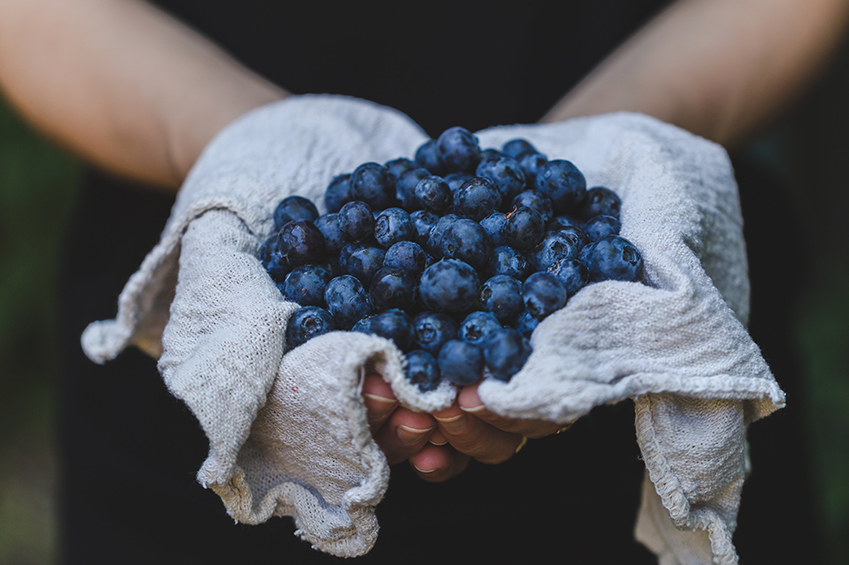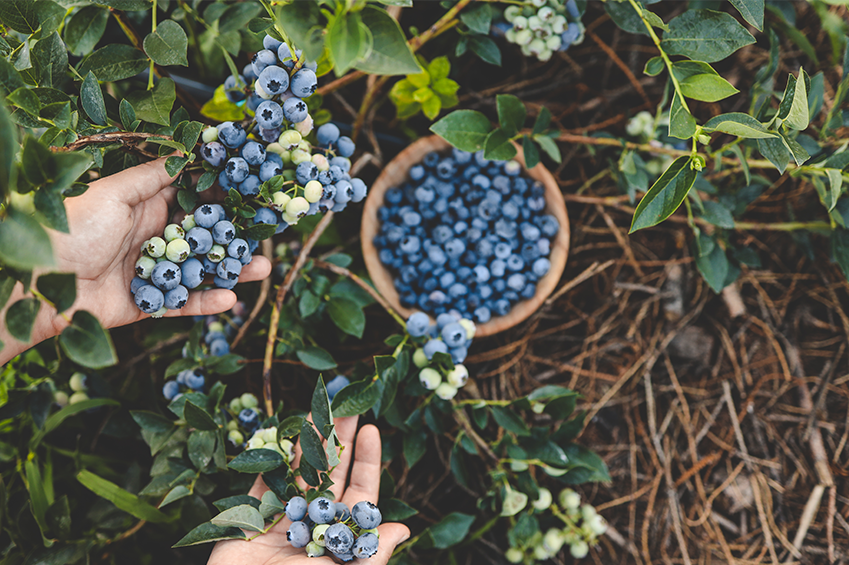Blueberry, American
The American blueberry, or cultivated in the garden, is much easier than our native blueberry, Vaccinium myrtillus. Its fruits are rich in vitamin C and other vitamins, as well as the blue-dyed substance anthocyanin. This plant pigment is said to have anti-inflammatory properties. Due to its decorative autumn coloring, the blueberry is also very popular as an ornamental plant.

Cultivation and location – How and where best?
The blueberry requires a space of up to 1.5 meters by 1.5 meters and reaches a height of 1 to 1.5 meters. It grows and thrives best in humus-rich, acidic soil that is well-drained. Less acidic soils can simply be acidified with peat. Optimal locations are either in full sun or partial shade and are sheltered from the wind.
The best time to plant is in the fall. Add a mixture of sand, leaf compost, or bark compost to the hole, taking care not to plant too deeply. The root ball should still be one to two centimeters above the soil. To give your plants the best possible start, add 10-15 centimeters of bark mulch and then mulch.
Care – What needs to be done?
To achieve a consistently good harvest, certain pruning techniques must be followed on blueberry or bilberry bushes. A small, open, well-ventilated crown is recommended. Starting the year after planting, annual thinning is the best way to achieve quality yields. Simply remove the weaker and damaged shoots and leave the young, vigorous shoots, as blueberries primarily bear fruit at the tips of the previous year's shoots. Five to eight shoots per bush are optimal. You should start watering your blueberries well three to five weeks before harvest.
Fertilize with compost and rhododendron fertilizer in April and after harvest.
Possible diseases include anthracnose, shoot monilia and occasionally stem rot, but overall blueberries are very robust.
Harvest – What should you consider?
Blueberries ripen between July and September. The berries often ripen very irregularly. Therefore, it is recommended to examine the berries individually and pick only those that are blue to dark purple and covered with a waxy frost. A blueberry bush reaches its peak yield after approximately five years of cultivation. The flesh of the American blueberry is white, which has the advantage of not staining teeth. Furthermore, the fruit of the cultivated blueberry is twice or several times the size of the native blueberry. However, it has a somewhat less aromatic flavor.
Both forms are ideal for eating fresh as well as for further processing. Blueberry compote, blueberry jam, and blueberry pancakes are particularly popular.

Botany – What kind of plant is this?
The American blueberry is native to northeastern North America. It thrives in swampy meadows and moist forests. It is a deciduous shrub that requires cultivation in acidic soils. The small, white flower bells, up to ten millimeters long, bloom until mid-spring. The blueberry's leaves can turn deep red over the course of autumn. The blueberry thrives best in humid climates with colder winters. It is considered an ideal potted plant; the small shrubs often reach an age of 70 years or more. The blueberry is considered very robust and is therefore recommended for every hobby gardener.
The blueberry is a self-pollinator, but several neighboring plants promote its fruit set.
Cultural history – How did the blueberry come to us?
The Vaccinium corymbosum, also known as the American blueberry, is the result of breeding different plant species of the blueberry genus.
Since the beginning of the 20th century, well over 100 varieties of blueberries have been bred and marketed.
Varieties – Which are recommended?
The most popular varieties include:
- Blue-White-Gold Grape: beautiful white flowers, fruits from July, abundant harvest after only 1 to 2 years
- Bluecrop: most common variety, vigorous “grape blueberries”, also suitable for normal garden soils
- Bluetta: abundant harvest after just 1 to 2 years
TEXT: Carina Naeve




































































































